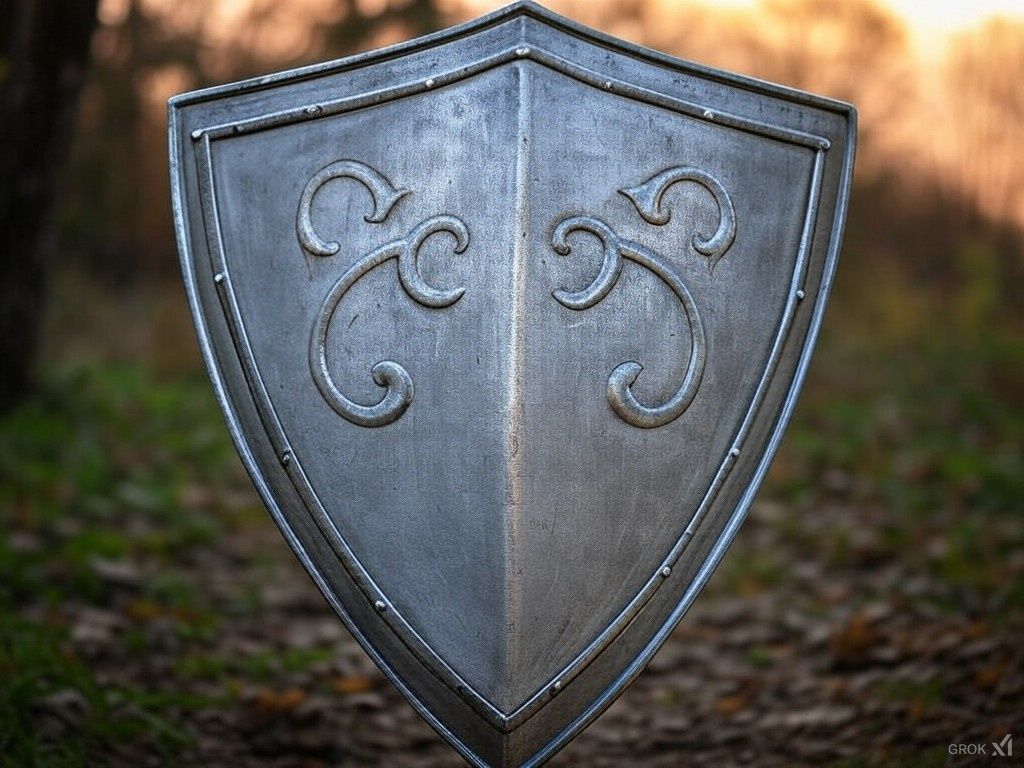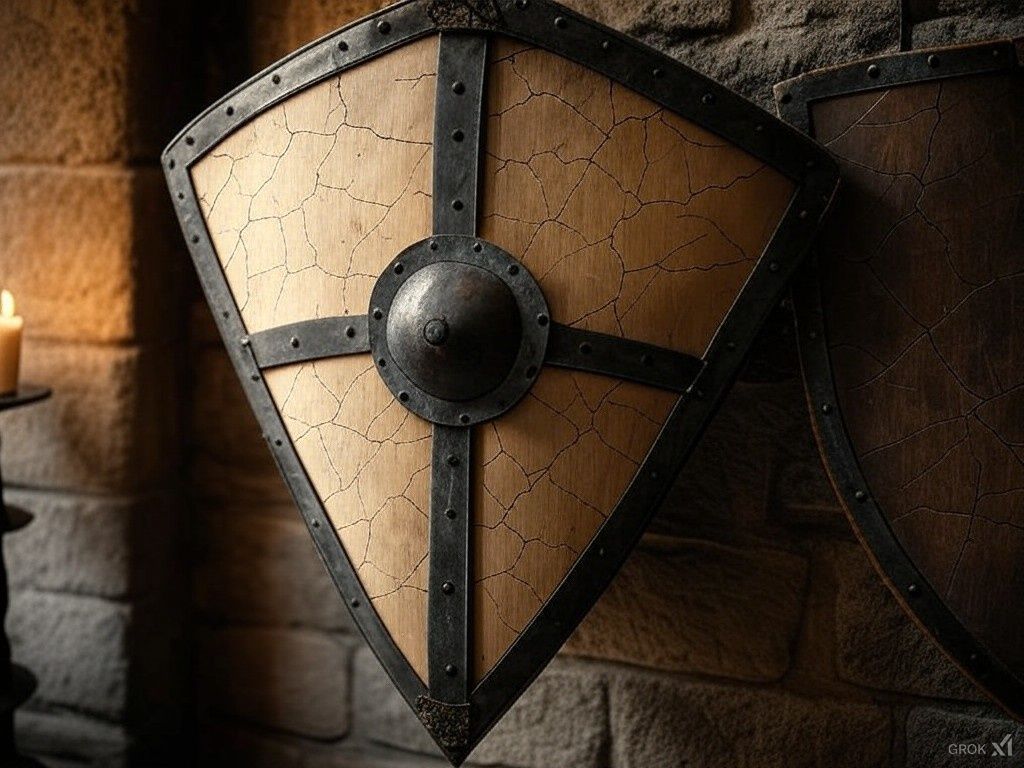What is the Triangular Shield?
The triangular shield, also known as the "Heater Shield," represents one of the most distinctive innovations in medieval weaponry. Originating from the Norman or "kite" shield, its introduction in the late 12th century and early 13th century marked a significant shift in medieval combat strategies. This shield was not only vital for the physical protection of warriors but also played a crucial role in the evolution of military tactics of the time.

Origin and Evolution
The development of the triangular shield is largely due to the changing needs of medieval fighters. As confrontations evolved, the kite shield, with its large size and pronounced curvature, was reduced and adapted to improve its maneuverability and versatility. This evolution not only allowed soldiers to move with greater agility but also enhanced their ability to engage in close combat.
Features of the Triangular Shield
- Design: Its distinctive triangular shape has a wider base, providing ample coverage for the user's torso and legs. This design makes it especially useful for mounted knights, who need to protect their legs while maintaining maneuverability.
- Materials: Generally constructed with a sturdy wooden base, the shield was externally reinforced with leather. Its lower edge was often reinforced with metal for added durability.
- Use: Due to its practical design, the triangular shield was used by both cavalry and infantry. Its lightweight and ease of handling made it an essential component of medieval military strategies.
Importance during the Middle Ages
The triangular shield established itself as a symbol of defense and military strategy during the Middle Ages. Its design allowed warriors not only to defend themselves effectively against enemy attacks but also to maintain the mobility necessary to execute effective counterattacks. This combination of defense and maneuverability distinguished it from other defensive equipment of the time.

Use in Combat
- Cavalry: The triangular structure of the shield allowed for efficient protection of the knight's legs. This protection was crucial for maintaining balance and stability on the horse during combat. Additionally, the shield did not obstruct the right arm, allowing knights to employ offensive weapons simultaneously.
- Infantry: For infantry soldiers, the shield offered an ideal balance between protection and mobility. Its shape and weight did not negatively impact their ability to move, allowing for effective offensive and defensive tactics.
Legacy of the Triangular Shield
The impact of the triangular shield transcended its function as a mere defensive tool. It represents a period of adaptation and refinement in medieval armament, as a result of the constant evolution of military tactics. Over the centuries, it has proven to be a lasting symbol of the innovative changes in warfare equipment.
| Aspect | Description |
|---|---|
| Design | Triangular shape, wide coverage. |
| Materials | Wood reinforced with leather and metal. |
| Uses | Cavalry and infantry. |
| Importance | Symbolizes defense and military strategy. |
The triangular shield remains a fascinating object of study for enthusiasts of history and military technology, a testament to the ingenuity and adaptation of medieval armed forces in the face of battlefield challenges.




























